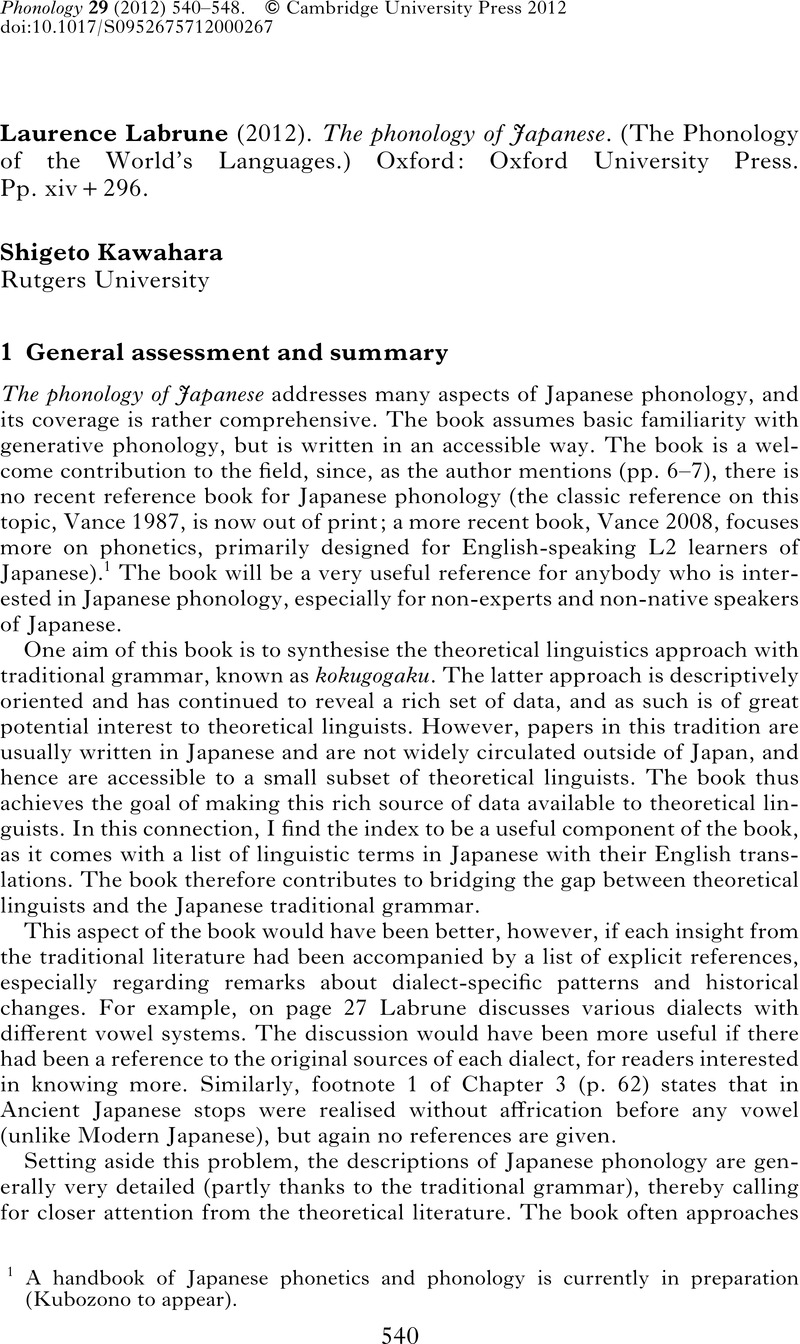Crossref Citations
This article has been cited by the following publications. This list is generated based on data provided by Crossref.
Ito, Junko
and
Mester, Armin
2016.
Unaccentedness in Japanese.
Linguistic Inquiry,
Vol. 47,
Issue. 3,
p.
471.
Kawahara, Shigeto
2016.
Japanese has syllables: a reply to Labrune.
Phonology,
Vol. 33,
Issue. 1,
p.
169.
Kitaoka, Daiho
and
Mackenzie, Sara
2021.
Moraic reversal and realisation: analysis of a Japanese language game.
Phonology,
Vol. 38,
Issue. 1,
p.
41.
Jaskuła, Krzysztof
2023.
A new consonant-vowel architecture: Japanese borrowings from European languages from the viewpoint of Complexity Scales and Licensing.
Lingua Posnaniensis,
Vol. 65,
Issue. 1,
p.
49.



